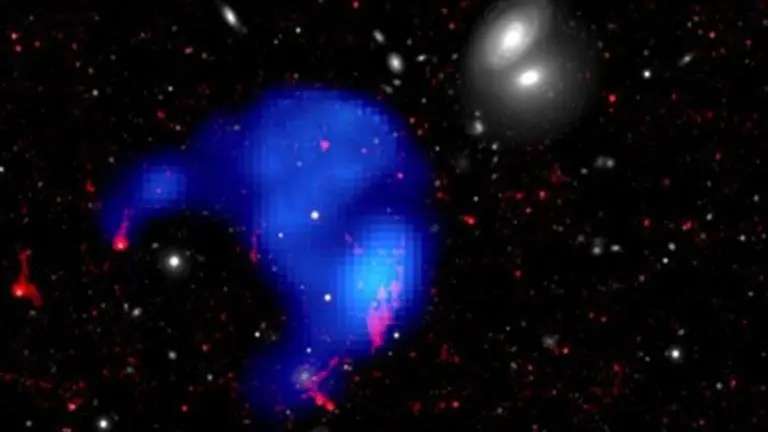Updated 5 July 2021 at 21:36 IST
‘Orphan cloud’ bigger than the entire Milky Way discovered in galaxy ‘no-man’s land’
The University of Alabama in Huntsville (UAH) found a lonely cloud bigger than the Milky Way. The massive cloud was discovered in Leo Cluster (Abell 1367).
- Science News
- 2 min read

Scientists recently discovered a lonely cloud bigger than the Milky Way. Yeah! you heard it right. The University of Alabama in Huntsville (UAH) found the orphan cloud in a "no man's land" for galaxies. The cloud is full of hot gas with 10,000-10,000,000 degrees Kelvin (K).
The massive cloud was discovered in Leo Cluster (Abell 1367), which is located around 300 million light-years from Earth, by a group of researchers led by Dr Ming Sun, a physicist.
“The gas in the cloud is removed by ram pressure of the hot gas in the cluster, when the host galaxy is soaring in the hot gas with a velocity of 1,000-2,000 kilometres per second. Once removed from the host galaxy, the cloud is initially cold and is evaporating in the host intracluster medium, like ice melting in the summer," Dr Sun was quoted as saying by the university.
It is estimated that the massive cloud, which has a total mass of 10 billion times the mass of the sun, has survived for "hundreds of millions of years" after parting ways from the host galaxy. What amazes the researchers the most is that the cloud has remained intact over such a duration.
Fascinated over such longevity, Dr Sun believed that it has something to do with the magnetic field in the cloud. The field may hold the cloud together by "suppressing unstable forces", the researchers think.
Advertisement
“This is an exciting and also a surprising discovery. It demonstrates that new surprises are always out there in astronomy, as the oldest of the natural sciences," Dr Sun said.
The cloud was spotted using the European Space Agency X-ray Multi-Mirror Mission (XMM) Newton telescope. It was also observed with European Southern Observatory's Very Large Telescope/Multi-Unit Spectroscopic Explorer (VLT/MUSE) and Japan's Subaru Telescope.
Advertisement
(Image credit: European Space Agency / XMM-Newton)
Published By : Kamal Joshi
Published On: 5 July 2021 at 21:36 IST
